Myopia Control
What is Myopia?Myopia, or shortsightedness, occurs when light entering the eye is focused in front of the retina rather than directly on the retina. This causes blurred distance vision. The more myopia you have, the closer you have to be to see an object clearly.
You are more likely to be myopic if you have at least one myopic parent, however up to 60% of patients with high myopia do not have a family history of the condition. Myopia progresses most rapidly in the early stages, so starting treatment as early as possible will give the best opportunity for a positive outcome. In the majority of cases myopia progression will naturally stop in their mid-twenties. |
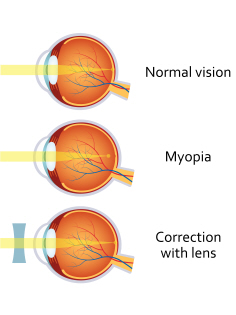 |
|
Why do we want to slow myopia progression?Unfortunately being myopic doesn’t just mean that you are reliant on glasses or contact lenses to see clearly in the distance. People who are myopic are more at risk of developing conditions like glaucoma, cataract, and retinal complications later in life.The greater the level of myopia, the higher the risk of the associated eye conditions. Because of this we strive to reduce the amount of myopic progression in our patients. |
||
How can you slow myopia progression?The progression of myopia is multifactorial and is not fully understood. This means that the benefits of myopia control are measured over a population group and will vary between individuals. At present there are no treatments to stop the progression of myopia completely, however, there are a number of options that can be beneficial in slowing the progression of shortsightedness.Spending more time outdoors has been linked with lower incidence of myopia and reduced myopic progression. The majority of the lens based treatments work on the peripheral defocus theory. Traditional glasses and contact lenses correct myopia by focusing light directly on the central retina to give a clear image. However, due to the limitations of the eyes optics, there is a hyperopic defocus on the peripheral retina (the light is focused behind the retina). This peripheral hyperopic defocus is believed to be a signal for the eye to continue growing, leading to more shortsightedness. Myovision spectacle lenses and myopia control contact lenses are adapted to induce a myopic defocus on the peripheral retina (the light is focused slightly in front of the retina), while maintaining a clear central focus. This reduces the signal for eye growth. An emerging treatment for myopia progression involves the use of low concentration atropine drops. The exact method of action is unknown at this point, but it is believed to be linked with inhibition of thinning and stretching of eye tissues. You may have heard about a form of myopia control which involves undercorrecting myopia, giving weaker glasses than what is necessary for clear vision. This does not work, and in fact has been found to increase the progression of myopia. Because of this, even if you decide not to pursue myopia control treatment for your child, it is important that they continue to have regular eye examinations and updates to their glasses or contact lenses as required. |
||
What options are suitable for my child?Adaption of environmental factorsMyopic children tend to spend 1-2 hours less outdoors per week than non myopic children.Spending more time outdoors has been found to be protective against myopia progression. There is no proven link between near work and myopia, though children who work at close distances and spend excessive time focused on reading may be at particular risk of progression. |
||
| Myopia control glasses Myovision glasses lenses have been specially designed to help reduce progression of myopia. This type of lens is particularly helpful in children who have one or more parents with myopia, or who have a moderate amount of astigmatism. Studies including children up to the age of 12 have shown up to 30% reduction in myopia progression if their parents are shortsighted. This as a good option for younger children or those who are not suitable for contact lens wear, though it is not as effective as other forms of myopia control. Progressive and bifocal lenses have been traditionally used to help control the progression of myopia, however the studies into their effectiveness have been contradictory. |
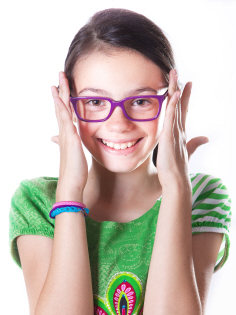 |
|
Soft contact lensesMisight contact lenses are a single wear disposable contact lens which can reduce myopia progression by up to 50%.The contact lenses are worn during the day and are removed each night. Because they are a daily disposable lens there is no need to clean the lens, as you use a fresh lens every day. This reduces the risk of infection when compared with reusable lenses. These lenses are not available in high prescriptions, or for patients with significant astigmatic corrections. |
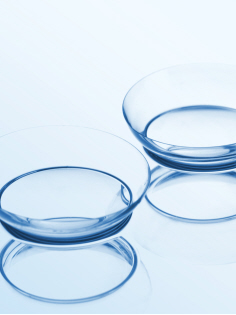 |
|
Orthokeratology lensesOrthokeratology lenses are a rigid contact lens which is worn overnight while you sleep. The action of fluid forces under the lens gently remolds the surface of the cornea, allowing clear vision during the day without any lenses. There is a slightly higher risk of infections with overnight wear, but the fact that the lenses don’t need to be worn during the day means that we remove the risk of contact lens complications during the day when your child is at school. Orthokeratology lenses have been found to reduce myopia progression by up to 50%. For pricing click here. |
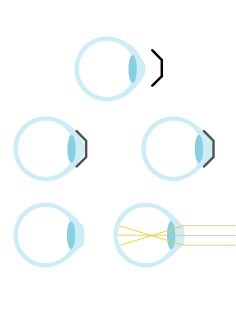 |
|
Atropine eye dropsAtropine is not commercially available at the concentrations required for this treatment, and needs to be specially made. Atropine drops have been found to reduce the progression of myopia by up to 50%. Though the safety and effectiveness has been proven in the short term, the long term effects of the treatment is unknown.An assessment with a therapeutic optometrist is required for this treatment. |
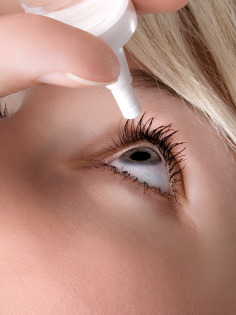 |
|


